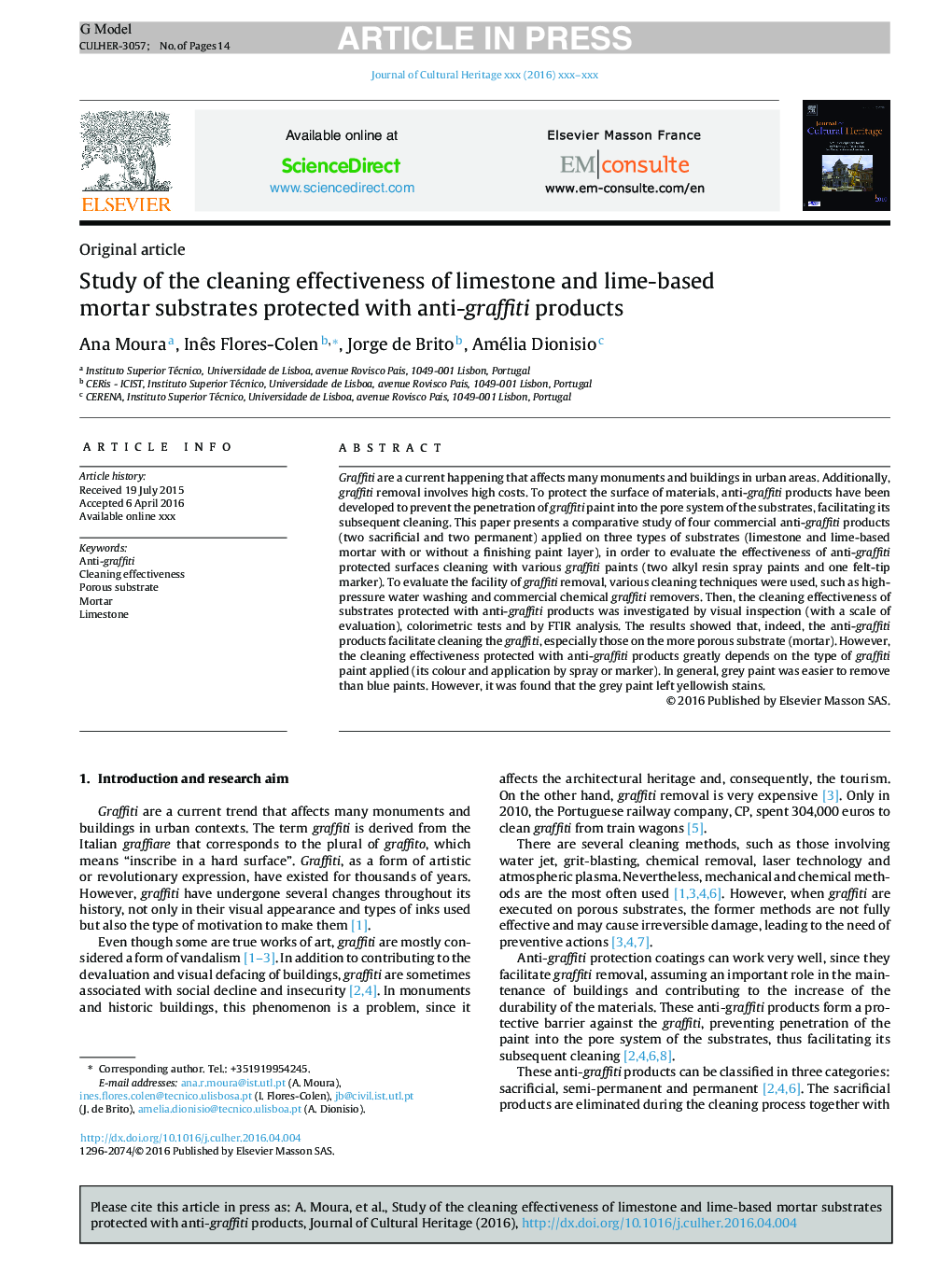| Article ID | Journal | Published Year | Pages | File Type |
|---|---|---|---|---|
| 5112667 | Journal of Cultural Heritage | 2017 | 14 Pages |
Abstract
Graffiti are a current happening that affects many monuments and buildings in urban areas. Additionally, graffiti removal involves high costs. To protect the surface of materials, anti-graffiti products have been developed to prevent the penetration of graffiti paint into the pore system of the substrates, facilitating its subsequent cleaning. This paper presents a comparative study of four commercial anti-graffiti products (two sacrificial and two permanent) applied on three types of substrates (limestone and lime-based mortar with or without a finishing paint layer), in order to evaluate the effectiveness of anti-graffiti protected surfaces cleaning with various graffiti paints (two alkyl resin spray paints and one felt-tip marker). To evaluate the facility of graffiti removal, various cleaning techniques were used, such as high-pressure water washing and commercial chemical graffiti removers. Then, the cleaning effectiveness of substrates protected with anti-graffiti products was investigated by visual inspection (with a scale of evaluation), colorimetric tests and by FTIR analysis. The results showed that, indeed, the anti-graffiti products facilitate cleaning the graffiti, especially those on the more porous substrate (mortar). However, the cleaning effectiveness protected with anti-graffiti products greatly depends on the type of graffiti paint applied (its colour and application by spray or marker). In general, grey paint was easier to remove than blue paints. However, it was found that the grey paint left yellowish stains.
Related Topics
Physical Sciences and Engineering
Chemistry
Physical and Theoretical Chemistry
Authors
Ana Moura, Inês Flores-Colen, Jorge de Brito, Amélia Dionisio,
